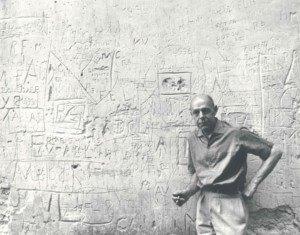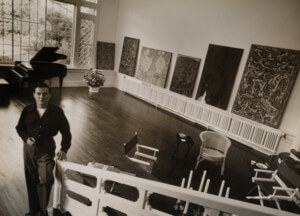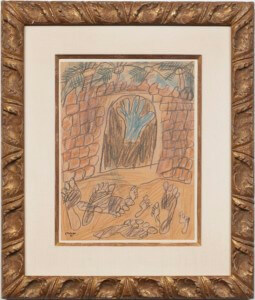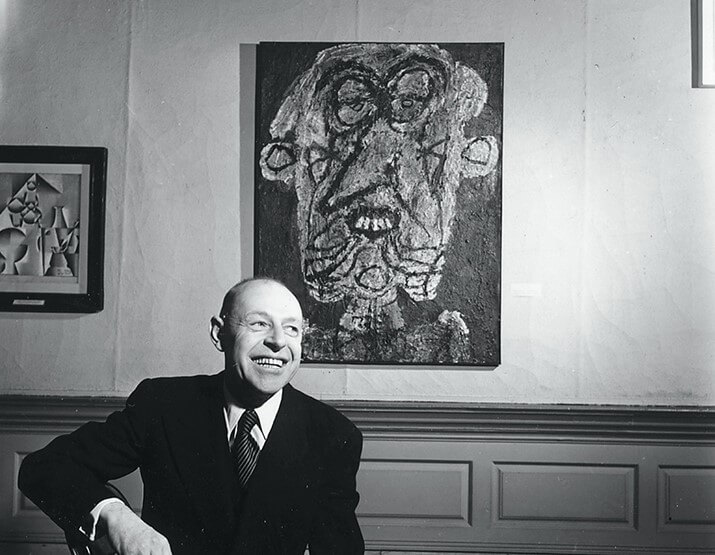We’ve all heard that joke about modern art: a bewildered onlooker, confronted with a Pollock or a Rothko, exclaims: ‘How much? But my kid could have done that!’ Not an opinion that most artists would take as a compliment, surely – but Jean Dubuffet would have been delighted. Dubuffet, the provocative French Postwar artist currently the subject of the Barbican’s show Brutal Beauty, was a rebel from the get-go. Rejecting conventional perceptions of beauty in art, Dubuffet instead embraced so-called ‘low art’, or outsider art; that is, art created by those outside the mainstream and lacking formal training. The examples he used were patients in psychiatric hospitals….and children! According to Dubuffet and the movement he labelled art brut, these untrained artists produced works that were more direct, emotional and truthful than the works produced by professionals, which were inevitably influenced by their knowledge of technique.


Jean Dubuffet in Vence, 1959, photograph by John Craven, © Archives Fondation Dubuffet
Not only a creator of art brut, Dubuffet was also a passionate promoter and collector. Together with collaborators including André Breton, Dubuffet established the Compagnie de l’Art Brut, which amassed a substantial collection of artworks numbering in the thousands. It is known as the Collection de l’art brut and is housed in Lausanne, Switzerland. Explaining the value of this type of art, Dubuffet wrote: ‘those works created from solitude and from pure and authentic creative impulses – where the worries of competition, acclaim and social promotion do not interfere – are, because of these very facts, more precious than the productions of professionals.’ Mainstream artistic culture, he went on to argue, was detrimental to truth in artistic expression.


Alfonso Ossorio at The Creeks with paintings by Dubuffet and Clyfford Still, 1952, photograph by Hans Namuth, © Hans Namuth Estate
Before Dubuffet set up the foundation to house his collection, he stored the artworks he owned at the Long Island home ‘The Creeks’ of his friend and fellow artist Alfonso Ossorio – who generously looked after them for a decade. Dubuffet and his wife had been introduced to Filipino-American Abstract Expressionist Ossorio by Jackson Pollock, and Ossorio owned pieces by Dubuffet, including Porte de l’oasis avec traces de pas dans le sable (available for sale by Dickinson), executed the year before Ossorio visited the Dubuffets in Paris.


J. Dubuffet, Porte de l’oasis avec traces de pas dans le sable, Jan. 1948, available for sale at Dickinson
Ironically, perhaps, Dubuffet himself sought acceptance from the very artistic establishment he advocated against, and achieved rapid success in America after his inclusion in the 1946 Pierre Matisse Gallery exhibition in New York. One article in Newsweek described Dubuffet as ‘the darling of Parisian avant-garde circles’. He has remained popular among collectors ever since, and Dickinson has negotiated the sale of a number of his works over the years, including the collage Pied de mur aux demi-deuil from 1957.
The Barbican show, which brings together Dubuffet’s own work with examples of outsider art from his own collection, is the first major survey of Dubuffet’s oeuvre in the UK in over 50 years. On view through 22 August.


